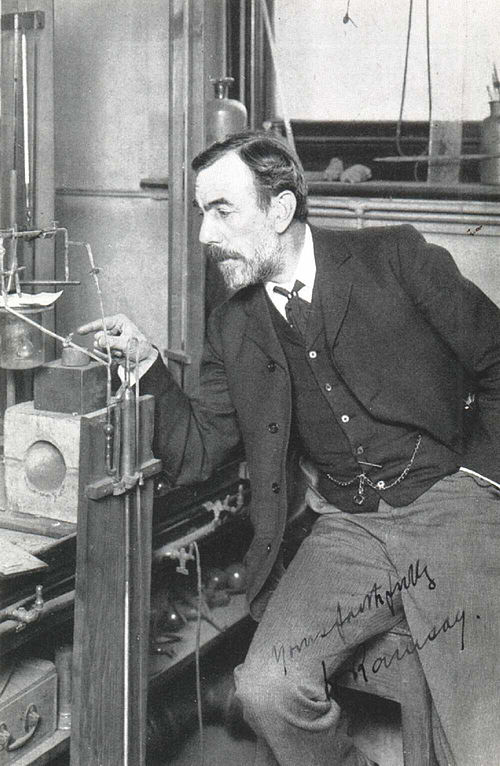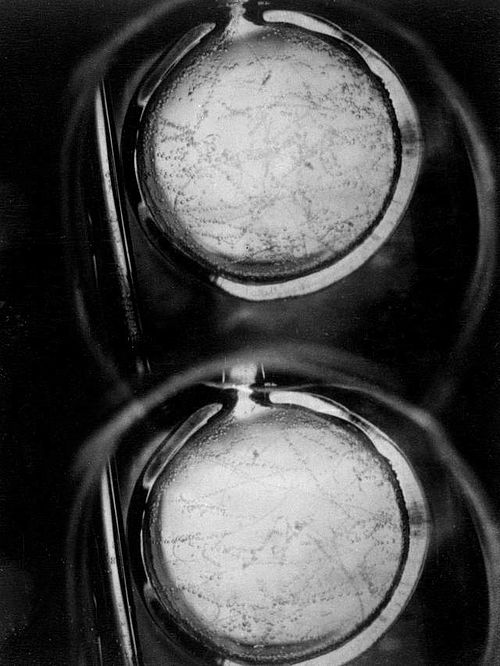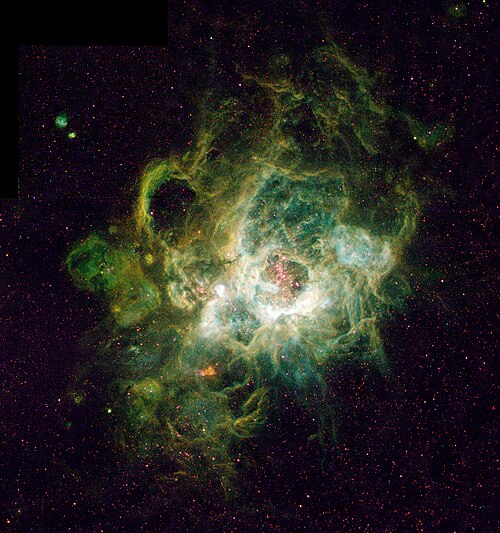Heliumnoun
(uncountable) The second lightest chemical element (symbol He) with an atomic number of 2 and atomic weight of 4.002602, a colorless, odorless and inert noble gas.
Heliumnoun
(countable) A form or sample of the element.
Heliumnoun
An inert, monoatomic, gaseous element occurring in the atmosphere of the sun and stars, and in small quantities in the earth's atmosphere, in several minerals and in certain mineral waters. It is obtained from natural gas in industrial quantities. Symbol, He; atomic number 2; at. wt., 4.0026 (C=12.011). Helium was first detected spectroscopically in the sun by Lockyer in 1868; it was first prepared by Ramsay in 1895. Helium has a density of 1.98 compared with hydrogen, and is more difficult to liquefy than the latter. Chemically, it is an inert noble gas, belonging to the argon group, and cannot be made to form compounds. The helium nucleus is the charged particle which constitutes alpha rays, and helium is therefore formed as a decomposition product of certain radioactive substances such as radium. The normal helium nucleus has two protons and two neutrons, but an isotope with only one neutron is also observed in atmospheric helium at an abundance of 0.013 %. Liquid helium has a boiling point of -268.9° C at atmospheric pressure, and is used for maintaining very low temperatures, both in laboratory experimentation and in commercial applications to maintain superconductivity in low-temperature superconducting devices. Gaseous helium at normal temperatures is used for buoyancy in blimps, dirigibles, and high-altitude balloons, and also for amusement in party balloons.
Heliumnoun
a very light colorless element that is one of the six inert gasses; the most difficult gas to liquefy; occurs in economically extractable amounts in certain natural gases (as those found in Texas and Kansas)
Helium
Helium (from Greek: ἥλιος, romanized: helios, lit. 'sun') is a chemical element with the symbol He and atomic number 2. It is a colorless, odorless, tasteless, non-toxic, inert, monatomic gas, the first in the noble gas group in the periodic table.
Hydrogennoun
The lightest chemical element (symbol H), with an atomic number of 1 and atomic weight of 1.00794.
Hydrogennoun
Molecular hydrogen (H2), a colourless, odourless and flammable gas at room temperature.
Hydrogennoun
An atom of the element.
Hydrogennoun
A sample of the element.
Hydrogennoun
A gaseous element, colorless, tasteless, and odorless, the lightest known substance, being fourteen and a half times lighter than air (hence its use in filling balloons), and over eleven thousand times lighter than water. It is very abundant, being an ingredient of water and of many other substances, especially those of animal or vegetable origin. It may by produced in many ways, but is chiefly obtained by the action of acids (as sulphuric) on metals, as zinc, iron, etc. It is very inflammable, and is an ingredient of coal gas and water gas. It is standard of chemical equivalents or combining weights, and also of valence, being the typical monad. Symbol H. Atomic weight 1.
Hydrogennoun
a nonmetallic univalent element that is normally a colorless and odorless highly flammable diatomic gas; the simplest and lightest and most abundant element in the universe
Hydrogen
Hydrogen is the chemical element with the symbol H and atomic number 1. Hydrogen is the lightest element in the periodic table.

















